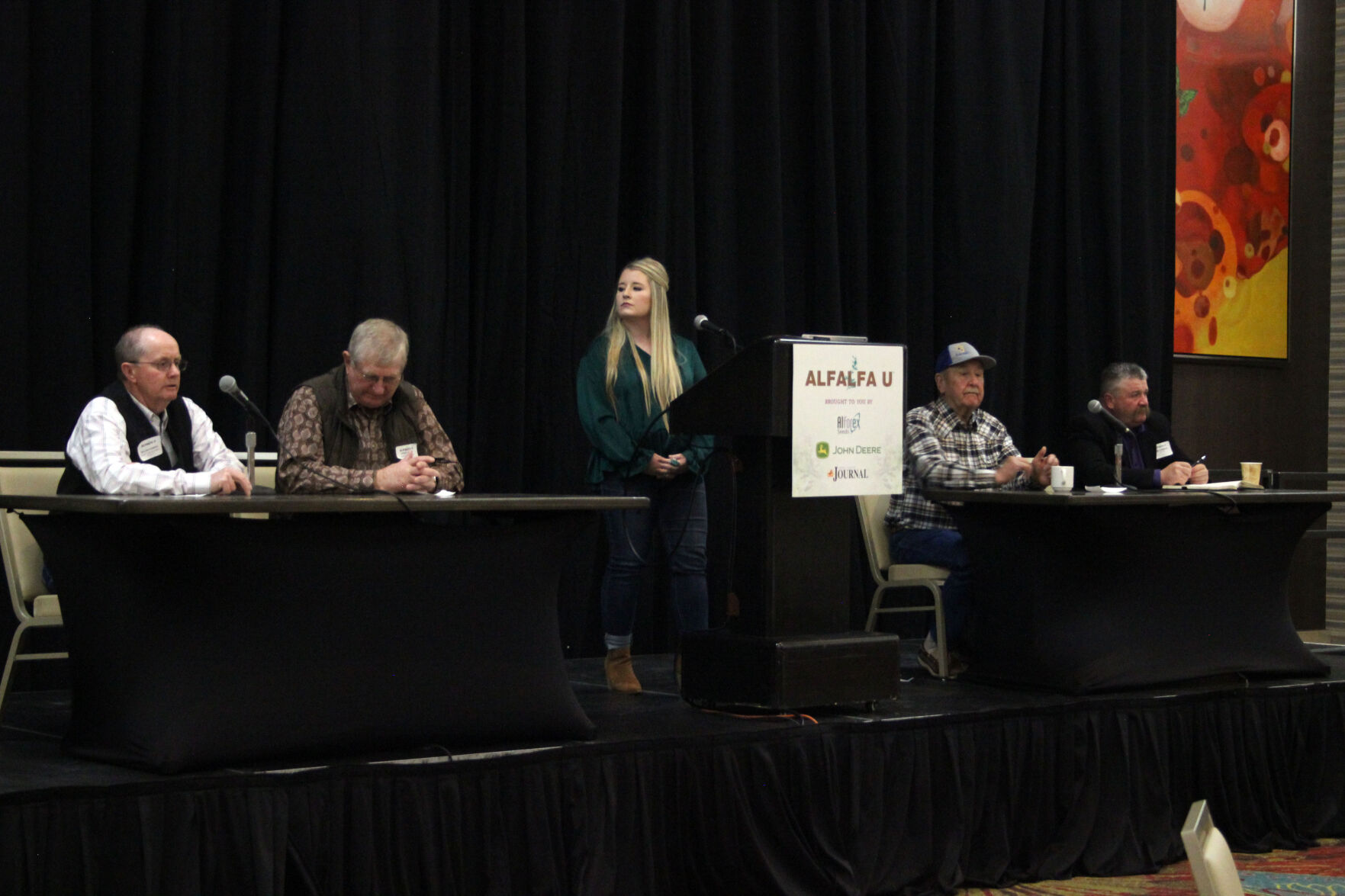Alfalfa U Farmer Panel in Nevada brings insight from the West

Although Nevada is often associated with the bright lights and slot machines of Sin City, alfalfa is the leading crop in the state and it is sold to many surrounding states. An Alfalfa U event was held Feb. 24 in Reno, Nevada, with growers from across the western United States. The event kicked off with the farmer panel, featuring four diverse growers.
One panelist, Craig Laub of southwestern Utah, co-owns Laub Feeding and Cubing, a multi-generational cubing, feeding and custom harvesting business where they raise alfalfa hay, grain and corn. Laub markets hay to Japan, Taiwan and has a growing retail and wholesale horse feeding market.
Jim Gallagher of Eureka, Nevada, also sat on the panel. He has managed Eureka Producers Coop, a small hay marketing coop with 13 members, for 21 years. They market 20,000 to 25,000 tons of alfalfa, timothy and orchard grass hay annually.
Kim Summers, who owns Kustom Crop Solutions, a farm and ranch consulting business in Winnemucca, Nevada, also joined in on the discussion. He also manages Knott Creek Ranch for R.D.D. Inc, a 1,600-acre hay and forage farm and Happy Creek Ranch, which encompasses nearly 3,000 acres of hay and forage crops and nearly 4,000 head of cattle.
The final panelist was Rulon Fowers of Hooper, Utah, who co-owns Circle F Land and Livestock, a forage crops operation and small feedlot. Circle F farms about 150 acres of alfalfa, three-way grain for hay, teff grass and sudan; along with a trucking company and hay facilitating business.
The conversation kicked off with the growers explaining the challenges and opportunities associated with their geographic region and how they manage their alfalfa operations with them in mind. Summers said the distance from his operation to the buyers and the difficulty finding laborers are the main challenges.
“Getting families who want to live two hours one way to town is a difficult thing and labor and housing are always challenging,” he said.
However, he explained that water availability is a major plus in his location because his operation is the only landowner in the basin, he has control over the resource. Unlike Summers, Gallagher, Fowers and Laub said water management and producing a crop with limited water is always a pivotal concern for their operations. Fowers manages dry conditions by rotating his alfalfa with a three- or four-way cereal grain like triticale, wheat, barley, oats or peas and implementing minimum or no-tillage to conserve water.
When the subject of yield versus quality arose, Laub said his operation focuses on yield because the newer varieties of hay are more winter hardy and come back so fast there is a risk of it getting too old and ripe.
“We want to get it off in four or five days at the most because of the regrowth,” he said. “We cut when we start to see the regrowth so we’re not running on our next crop, because that’s detrimental to our yield.”
Gallagher and Summers agreed they have different priorities with each type of hay.
“For grass hay we cut for color and alfalfa we cut for tons that will still make the California-grade or the dairy-grade hay,” Gallagher said.
Although these four growers raise diverse forages, farm in locations that offer unique drawbacks and benefits, and offer different services and products, they are all similar when it comes to striving to please their customers and raise a product they are proud to market.
Lacey Vilhauer can be reached at 620-227-1871 or [email protected].



